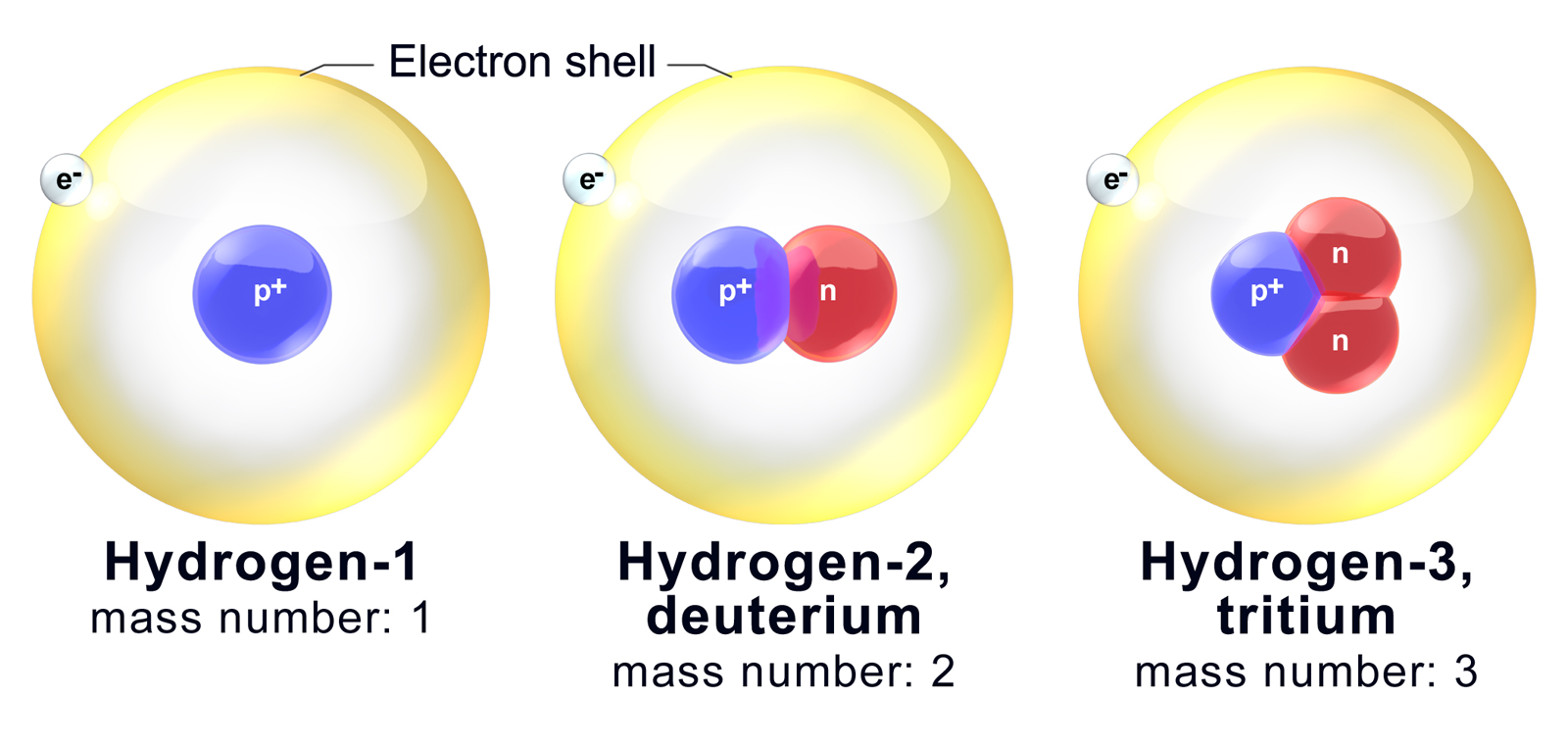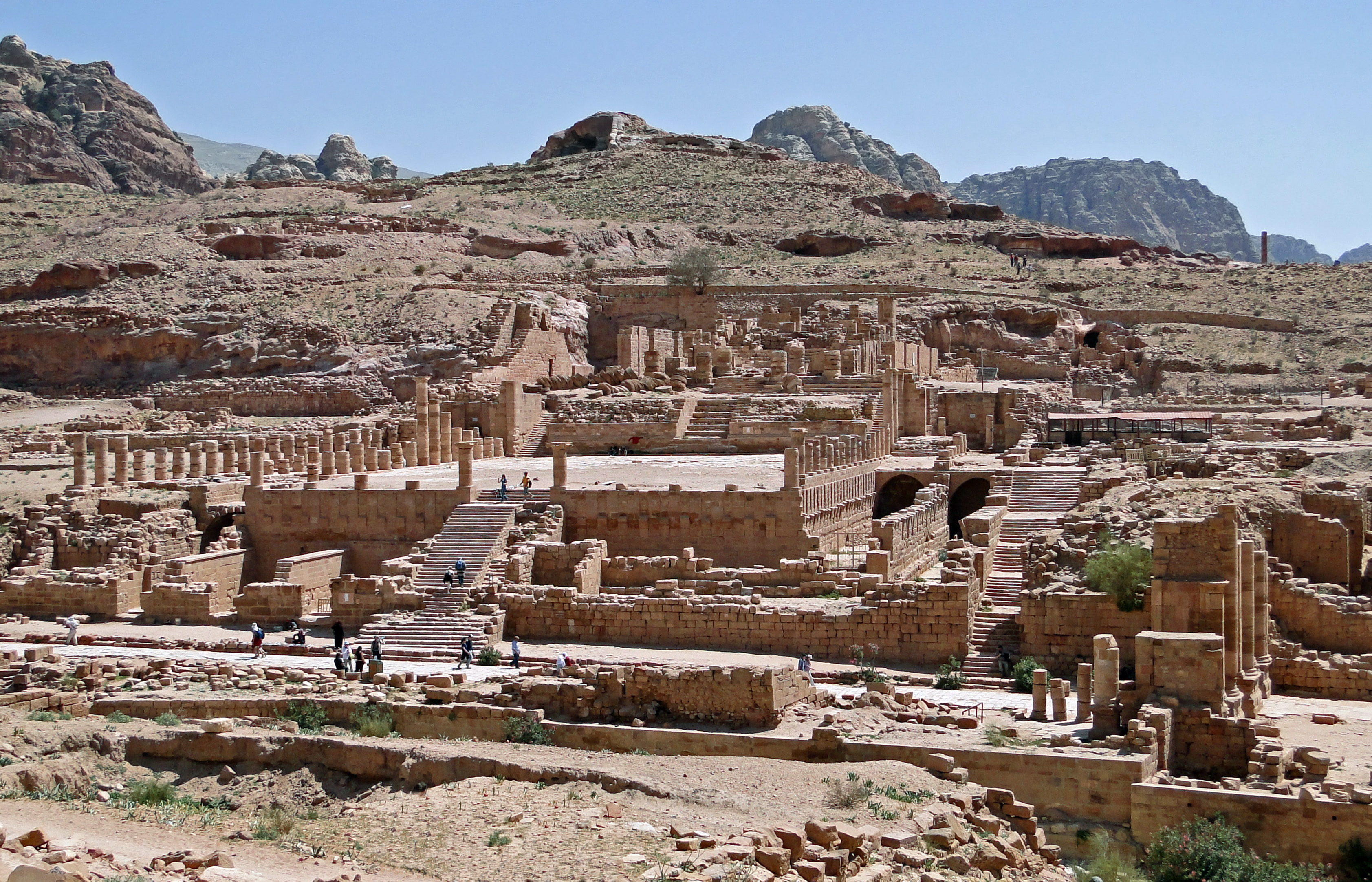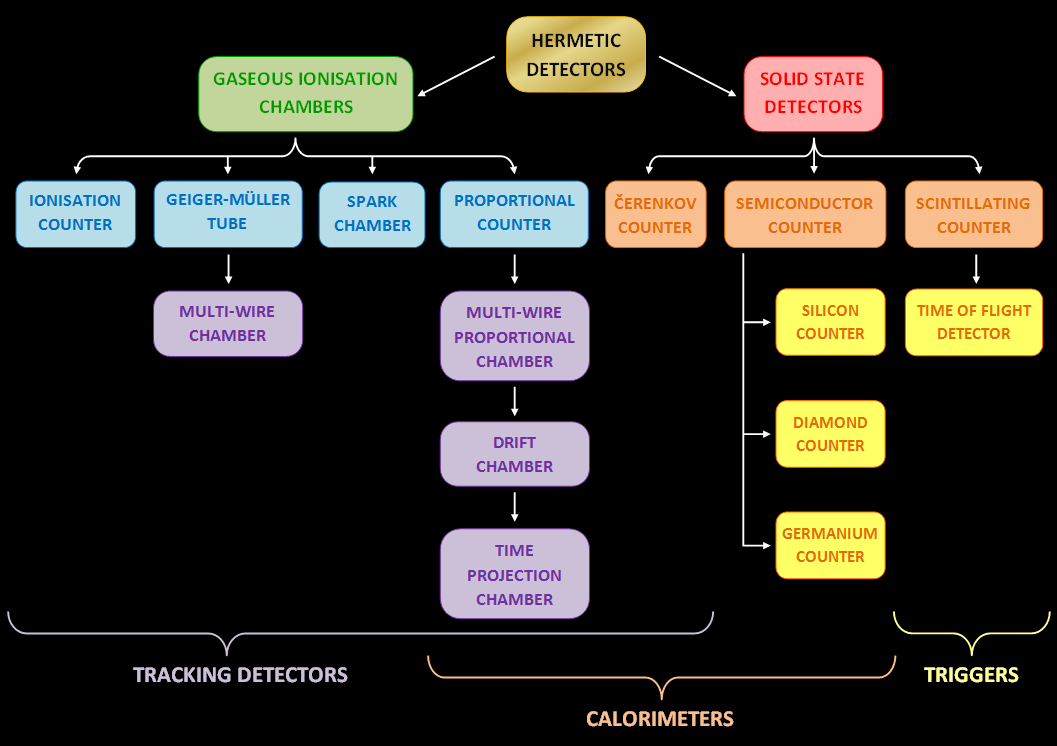|
HERA (particle Accelerator)
HERA (, ) was a particle accelerator at DESY in Hamburg. It was operated from 1992 to 30 June 2007. At HERA, electrons or positrons were brought to collision with protons at a center-of-mass energy of 320 GeV. HERA was used mainly to study the structure of protons and the properties of quarks, laying the foundation for much of the science done at the Large Hadron Collider (LHC) at the CERN particle physics laboratory today. HERA is the only lepton–proton collider in the world to date and was on the energy frontier in certain regions of the kinematic range. To collide protons with either electrons or positrons, HERA used mainly superconducting magnets, which was also a world first. At HERA, it was possible to study the structure of protons up to 30 times more accurately than before. The resolution covered structures 1/1000 of the proton in size, facilitating many discoveries concerning the composition of protons from quarks and gluons. The HERA tunnel runs 10 to 25&nb ... [...More Info...] [...Related Items...] OR: [Wikipedia] [Google] [Baidu] |
Particle Accelerator
A particle accelerator is a machine that uses electromagnetic fields to propel electric charge, charged particles to very high speeds and energies to contain them in well-defined particle beam, beams. Small accelerators are used for fundamental research in particle physics. Accelerators are also used as synchrotron light sources for the study of condensed matter physics. Smaller particle accelerators are used in a wide variety of applications, including particle therapy for oncology, oncological purposes, Isotopes in medicine, radioisotope production for medical diagnostics, Ion implantation, ion implanters for the manufacturing of Semiconductor, semiconductors, and Accelerator mass spectrometry, accelerator mass spectrometers for measurements of rare isotopes such as radiocarbon. Large accelerators include the Relativistic Heavy Ion Collider at Brookhaven National Laboratory in New York, and the largest accelerator, the Large Hadron Collider near Geneva, Switzerland, operated b ... [...More Info...] [...Related Items...] OR: [Wikipedia] [Google] [Baidu] |
Storage Ring
A storage ring is a type of circular particle accelerator in which a continuous or pulsed particle beam may be kept circulating, typically for many hours. Storage of a particular particle depends upon the mass, momentum, and usually the charge of the particle to be stored. Storage rings most commonly store electrons, positrons, or protons. Storage rings are most often used to store electrons that radiate synchrotron radiation. Over 50 facilities based on electron storage rings exist and are used for a variety of studies in chemistry and biology. Storage rings can also be used to produce polarized high-energy electron beams through the Sokolov-Ternov effect. The best-known application of storage rings is their use in particle accelerators and in particle colliders, where two counter-rotating beams of stored particles are brought into collision at discrete locations. The resulting subatomic interactions are then studied in a surrounding particle detector. Examples of such faci ... [...More Info...] [...Related Items...] OR: [Wikipedia] [Google] [Baidu] |
Synchrotron Radiation
Synchrotron radiation (also known as magnetobremsstrahlung) is the electromagnetic radiation emitted when relativistic charged particles are subject to an acceleration perpendicular to their velocity (). It is produced artificially in some types of particle accelerators or naturally by fast electrons moving through magnetic fields. The radiation produced in this way has a characteristic polarization, and the frequencies generated can range over a large portion of the electromagnetic spectrum. Synchrotron radiation is similar to bremsstrahlung radiation, which is emitted by a charged particle when the acceleration is parallel to the direction of motion. The general term for radiation emitted by particles in a magnetic field is ''gyromagnetic radiation'', for which synchrotron radiation is the ultra-relativistic special case. Radiation emitted by charged particles moving non-relativistically in a magnetic field is called cyclotron emission. For particles in the mildly relativ ... [...More Info...] [...Related Items...] OR: [Wikipedia] [Google] [Baidu] |
Compton Scattering
Compton scattering (or the Compton effect) is the quantum theory of high frequency photons scattering following an interaction with a charged particle, usually an electron. Specifically, when the photon hits electrons, it releases loosely bound electrons from the outer valence shells of atoms or molecules. The effect was discovered in 1923 by Arthur Holly Compton while researching the scattering of X-rays by light elements, and earned him the Nobel Prize in Physics in 1927. The Compton effect significantly deviated from dominating classical theories, using both special relativity and quantum mechanics to explain the interaction between high frequency photons and charged particles. Photons can interact with matter at the atomic level (e.g. photoelectric effect and Rayleigh scattering), at the nucleus, or with just an electron. Pair production and the Compton effect occur at the level of the electron. When a high frequency photon scatters due to an interaction with a charged part ... [...More Info...] [...Related Items...] OR: [Wikipedia] [Google] [Baidu] |
Sokolov–Ternov Effect
The Sokolov–Ternov effect is the effect of self-polarization of relativistic electrons or positrons moving at high energy in a magnetic field. The self-polarization occurs through the emission of spin-flip synchrotron radiation. The effect was predicted by Igor Ternov and the prediction rigorously justified by Arseny Sokolov using exact solutions to the Dirac equation. Theory An electron in a magnetic field can have its spin oriented in the same ("spin up") or in the opposite ("spin down") direction with respect to the direction of the magnetic field (which is assumed to be oriented "up"). The "spin down" state has a higher energy than "spin up" state. The polarization arises due to the fact that the rate of transition through emission of synchrotron radiation to the "spin down" state is slightly greater than the probability of transition to the "spin up" state. As a result, an initially unpolarized beam of high-energy electrons circulating in a storage ring after sufficiently ... [...More Info...] [...Related Items...] OR: [Wikipedia] [Google] [Baidu] |
Hydrogen
Hydrogen is a chemical element; it has chemical symbol, symbol H and atomic number 1. It is the lightest and abundance of the chemical elements, most abundant chemical element in the universe, constituting about 75% of all baryon, normal matter. Under standard conditions, hydrogen is a gas of diatomic molecules with the chemical formula, formula , called dihydrogen, or sometimes hydrogen gas, molecular hydrogen, or simply hydrogen. Dihydrogen is colorless, odorless, non-toxic, and highly combustible. Stars, including the Sun, mainly consist of hydrogen in a plasma state, while on Earth, hydrogen is found as the gas (dihydrogen) and in molecular forms, such as in water and organic compounds. The most common isotope of hydrogen (H) consists of one proton, one electron, and no neutrons. Hydrogen gas was first produced artificially in the 17th century by the reaction of acids with metals. Henry Cavendish, in 1766–1781, identified hydrogen gas as a distinct substance and discovere ... [...More Info...] [...Related Items...] OR: [Wikipedia] [Google] [Baidu] |
Tesla (unit)
The tesla (symbol: T) is the unit of magnetic flux density (also called magnetic B-field strength) in the International System of Units (SI). One tesla is equal to one weber per square metre. The unit was announced during the General Conference on Weights and Measures in 1960 and is named in honour of Serbian-American electrical and mechanical engineer Nikola Tesla, upon the proposal of the Slovenian electrical engineer France Avčin. Definition A particle, carrying a charge of one coulomb (C), and moving perpendicularly through a magnetic field of one tesla, at a speed of one metre per second (m/s), experiences a force with magnitude one newton (N), according to the Lorentz force law. That is, \mathrm. As an SI derived unit, the tesla can also be expressed in terms of other units. For example, a magnetic flux of 1 weber (Wb) through a surface of one square meter is equal to a magnetic flux density of 1 tesla.''The International System of Units (SI), 8th edition' ... [...More Info...] [...Related Items...] OR: [Wikipedia] [Google] [Baidu] |
PETRA
Petra (; "Rock"), originally known to its inhabitants as Raqmu (Nabataean Aramaic, Nabataean: or , *''Raqēmō''), is an ancient city and archaeological site in southern Jordan. Famous for its rock-cut architecture and water conduit systems, Petra is also called the "Rose City" because of the colour of the sandstone from which it is carved. The city is one of the New 7 Wonders of the World and a UNESCO World Heritage Site. The area around Petra has been inhabited from as early as 7000 BC, and was settled by the Nabataeans, a nomadic Arab people, in the 4th century BC. Petra would later become the capital city of the Nabataean Kingdom in the second century BC. The Nabataeans invested in Petra's proximity to the incense trade routes by establishing it as a major regional trading hub, which gained them considerable revenue. Unlike their enemies, the Nabataeans were accustomed to living in the barren deserts and thus were able to defend their kingdom. They were particularly sk ... [...More Info...] [...Related Items...] OR: [Wikipedia] [Google] [Baidu] |
Lepton
In particle physics, a lepton is an elementary particle of half-integer spin (Spin (physics), spin ) that does not undergo strong interactions. Two main classes of leptons exist: electric charge, charged leptons (also known as the electron-like leptons or muons), including the electron, muon, and tauon, and neutral leptons, better known as neutrinos. Charged leptons can combine with other particles to form various composite particles such as atoms and positronium, while neutrinos rarely interact with anything, and are consequently rarely observed. The best known of all leptons is the electron. There are six types of leptons, known as ''flavour (particle physics), flavours'', grouped in three ''Generation (particle physics), generations''. The Standard Model, first-generation leptons, also called ''electronic leptons'', comprise the electron () and the electron neutrino (); the second are the ''muonic leptons'', comprising the muon () and the muon neutrino (); and the third a ... [...More Info...] [...Related Items...] OR: [Wikipedia] [Google] [Baidu] |
Particle Detector
In experimental and applied particle physics, nuclear physics, and nuclear engineering, a particle detector, also known as a radiation detector, is a device used to detect, track, and/or identify ionizing elementary particle, particles, such as those produced by nuclear decay, cosmic radiation, or reactions in a particle accelerator. Detectors can measure the particle energy and other attributes such as momentum, spin, charge, particle type, in addition to merely registering the presence of the particle. The operating of a nuclear radiation detector The operating principle of a nuclear radiation detector can be summarized as follows: The detector identifies high-energy particles or photons—such as alpha, beta, gamma radiation, or neutrons—through their interactions with the atoms of the detector material. These interactions generate a primary signal, which may involve ionization of gas, the creation of electron-hole pairs in semiconductors, or the emission of light in scint ... [...More Info...] [...Related Items...] OR: [Wikipedia] [Google] [Baidu] |
HERA-B
The HERA-B detector was a particle physics experiment at the HERA accelerator at the German national laboratory DESY that collected data from 1993 to 2003. It measured 8 m × 20 m × 9 m and weighed 1000 tons. The HERA-B collaboration consisted of some 250 scientists from 32 institutes in 13 countries. Its primary aim was to measure CP violation in the decays of heavy B mesons in the late 1990s, several years ahead of the Large Hadron Collider and B Factory programs. Unlike most particle physics detectors, the particles were produced not by colliding two circulating beams head-on, nor by slamming the beam into a stationary target, but by moving a thin wire target directly into the waste 'halo' of the circulating proton beam of the HERA accelerator. The beam was unaffected by this 'scraping' but the collision rate produced could be made extremely high, around 5 to 10 million interactions per second (5–10 MHz). The collaboration developed a novel scheme for m ... [...More Info...] [...Related Items...] OR: [Wikipedia] [Google] [Baidu] |
HERMES Experiment
HERMES was a particle detector at the HERA particle accelerator located at the German national laboratory DESY in Hamburg. The experiment's goal was to investigate the quark–gluon structure of matter by examining how a nucleon's constituents affect its spin. It later developed into a pioneering experiment for measuring generalised parton parton distributions and a general-purpose experiment for the study of QCD processes. HERMES completed its first run between 1995 and 2000, and its second run between 2001 and 2007. It measured 3.5 m × 8 m × 5 m and weighed 400 tons. The HERMES collaboration consisted of nearly 200 scientists from more than 13 countries. Method HERA's longitudinally polarized electron beam was used to explore the spin structure of nucleons. For this purpose, the electrons were scattered at energies of 27.5 GeV at an internal gas target. This target and the detector itself were designed especially with a view to spin-polarized physics. ... [...More Info...] [...Related Items...] OR: [Wikipedia] [Google] [Baidu] |




